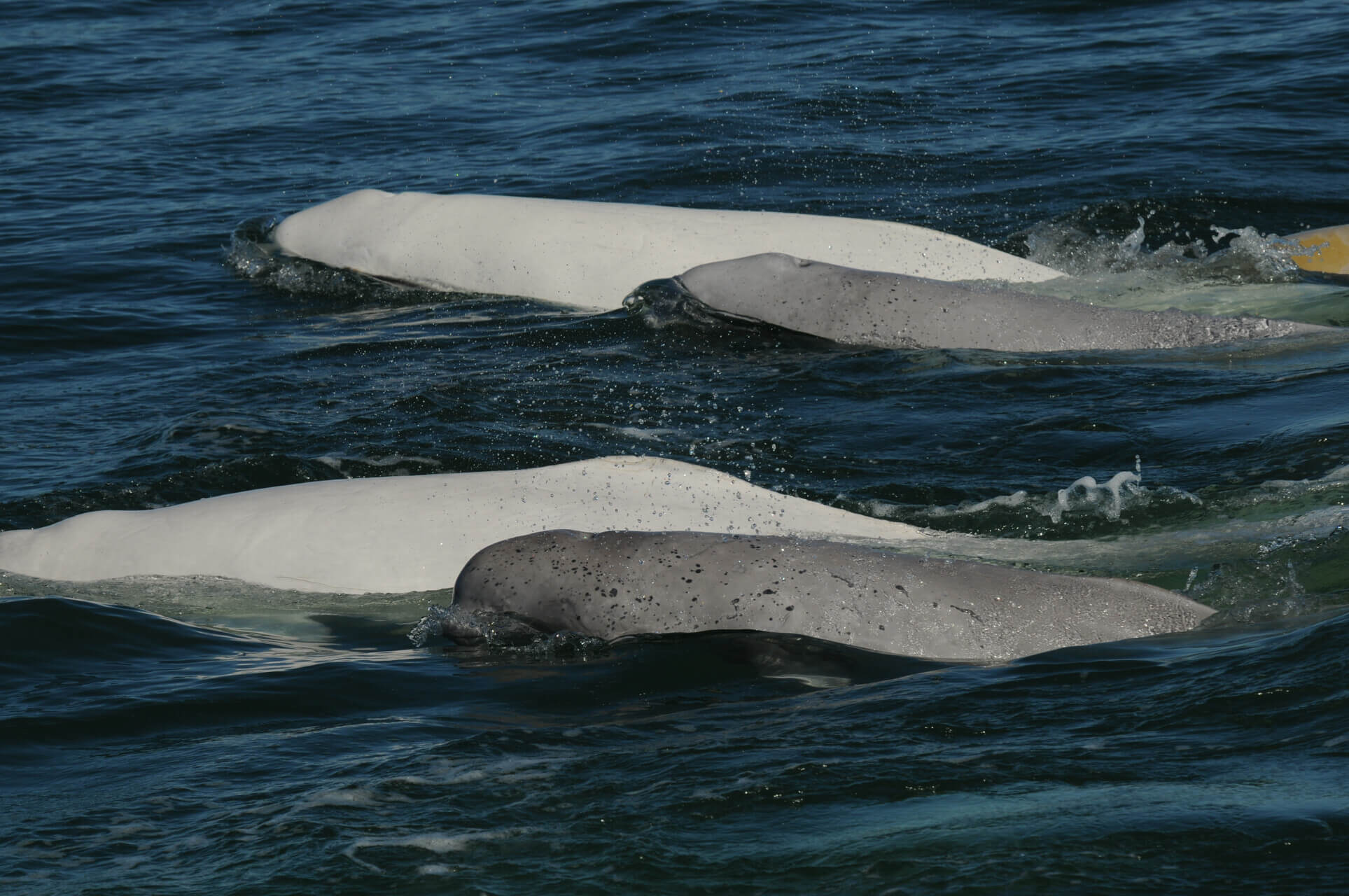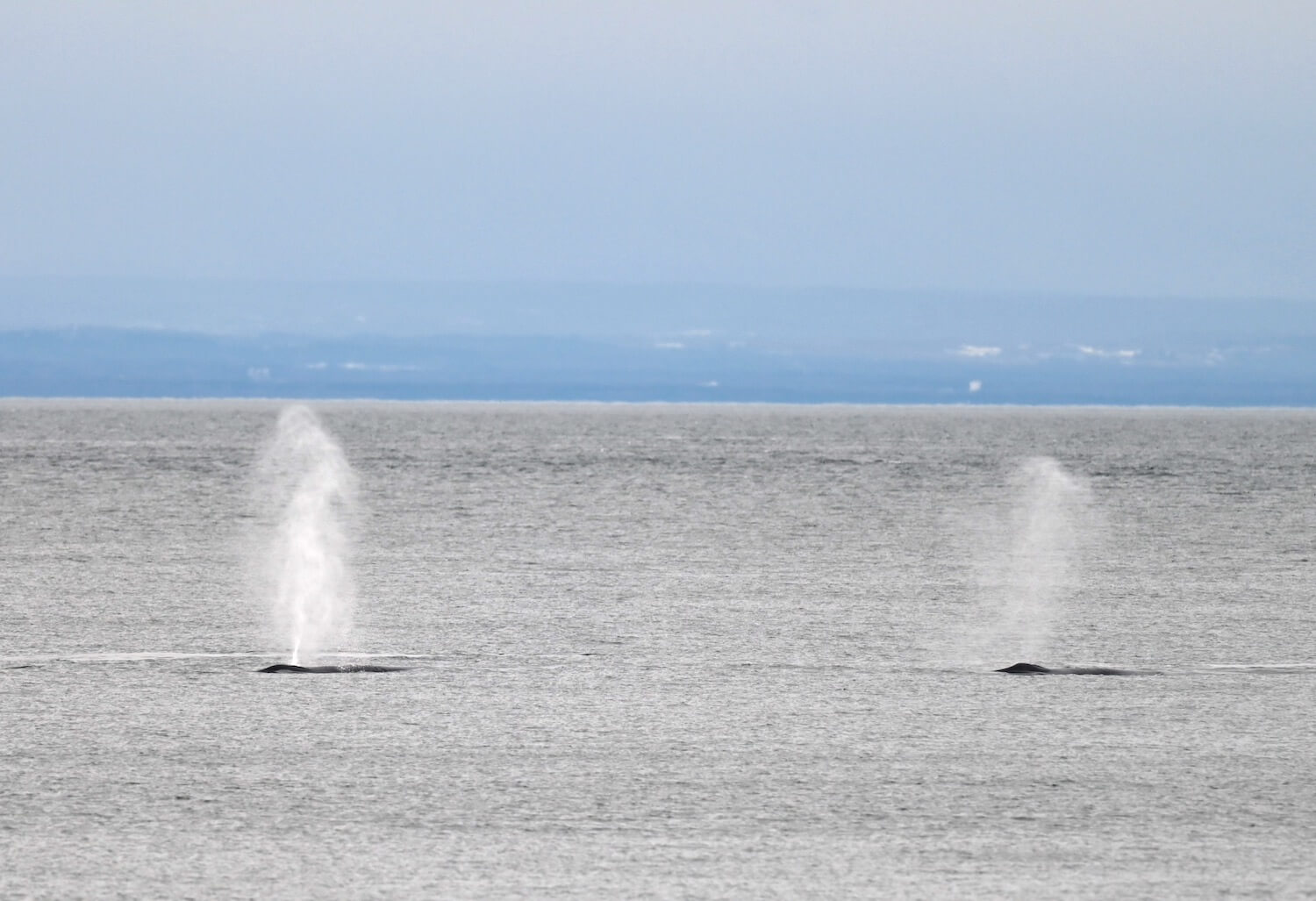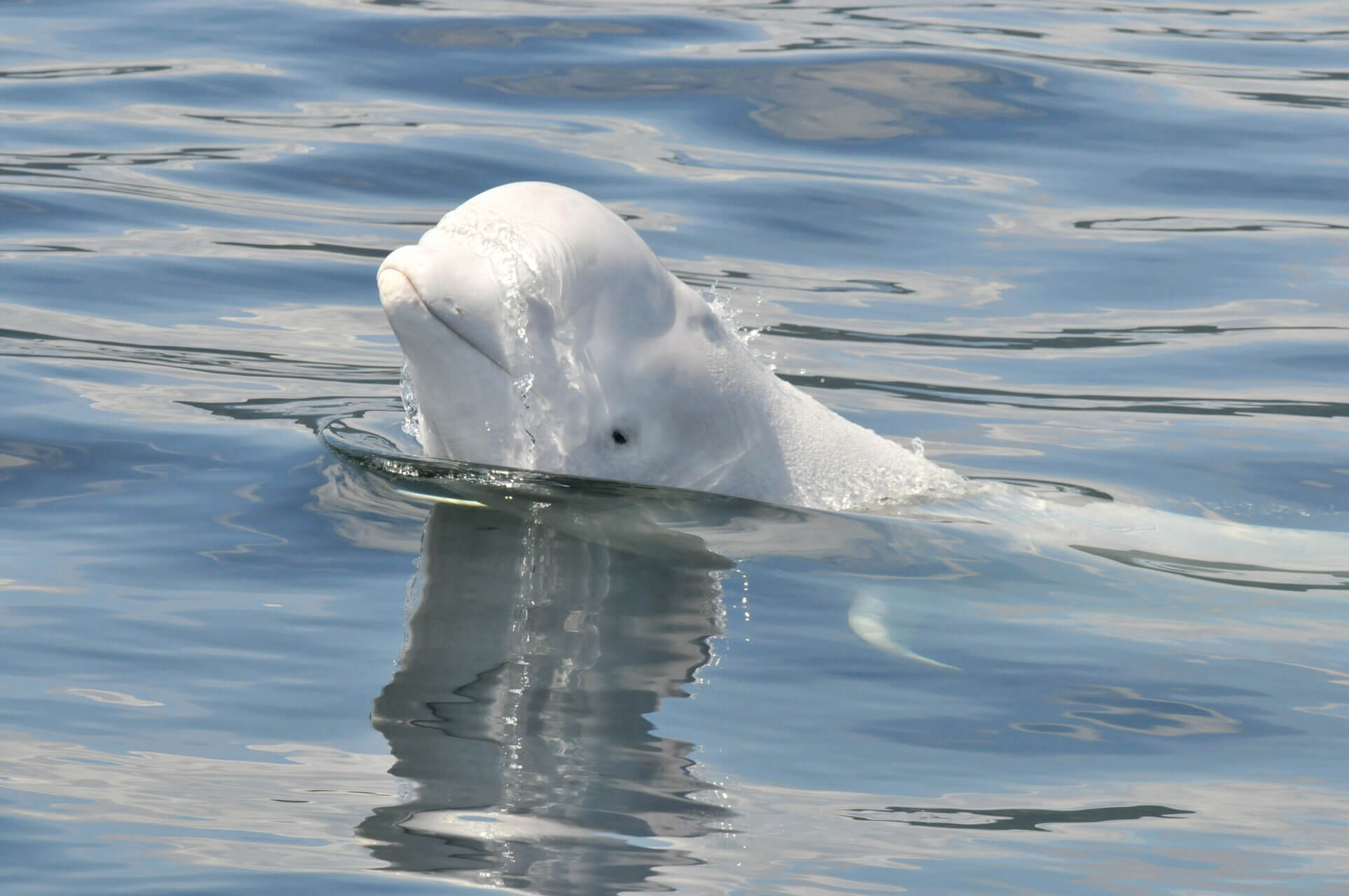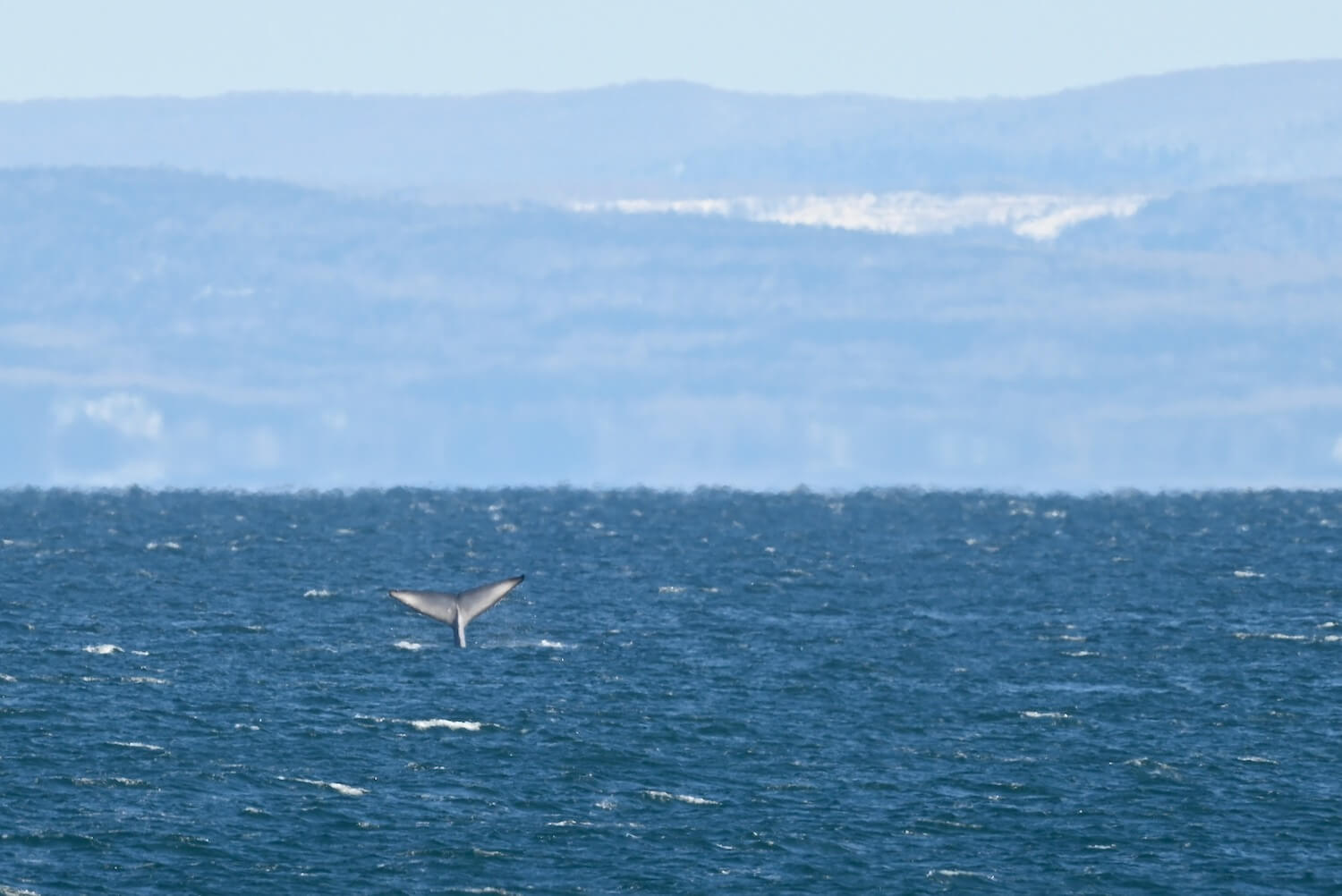The Whale Watch team and the team of naturalists at the Marine Mammal Interpretation Centre (CIMM) regularly receive questions about our resident St. Lawrence belugas, and with good reason! Belugas are fascinating and highly complex marine mammals that deserve to be studied. Questions often revolve around reproduction, and over the years, we have had the opportunity to write extensively on the subject!
This article therefore serves as a compilation of the three most frequently asked questions, all of which have been the subject of columns published between 2014 and this year. This is also a great way to see how research on these marine mammals has evolved. Enjoy the read!
Can belugas have twins?
From: PDB — August 1, 2025 Edition | Volume 24 | Number 7
Not only are whales biologically capable of experiencing multiple pregnancies, they are twice as likely to do so as humans! So why do we see so few twins? Research conducted in 2022 shows that in whales, very few multiple pregnancies result in live births. Fewer than one in every 500 multiple pregnancies amongst the 16 species recorded between 1908 and 2020 is believed to end in a live birth. Theories include the additional energy demands for the mother to have multiple calves and stunted fetal growth in warming waters due to climate change. Since newborn calves need assistance to swim, it is also possible that their low survival rate may be attributable to drowning, as their mothers would not be able to help more than one calf at a time.
There is, however, one very interesting element cited in this study. The observation of a female with two calves near her is often associated with alloparental care, which is frequently observed in belugas. However, it is not impossible that in some cases these offspring might actually be twins! Since nobody has ever seen a beluga give birth to multiple calves, this remains hypothetical.
Female belugas continue to feed even while they’re nursing!
From: PDB — August 15, 2025 Edition | Volume 24 | Number 9
Like other toothed whales – not to mention us humans – female belugas continue to feed while they nurse their young! This is called . This phenomenon is believed to be due to the fact that these animals remain in productive waters all year-round. In other words, they do not need to accumulate energy to give birth. They do, however, need to increase their energy intake during the nursing period, which can last up to 36 months. Lactating females must therefore ingest 30 to 60% more food than other females!
In contrast, amongst toothed whales such as the humpback, females eat next to nothing during their nursing period, which is shorter. With such a lengthy nursing period, beluga calves do not grow as quickly as other cetaceans. This gives them more time to learn complex hunting behaviours such as collaboration and echolocation, which they use to find their prey.
Do female belugas menstruate?
From: PDB — September 1, 2023 Edition | Volume 22 | Number 12
No, unlike humans, belugas do not menstruate! In fact, very few species in the animal kingdom experience this blood flow during their reproductive cycle. For whales as well as most other mammals, the absence of menstruation is explained by the fact that their endometrium is absorbed rather than expelled. The endometrium is a lining covering the uterus that grows thicker and fills with blood vessels during the reproductive cycle to accommodate a future fetus. If the egg is fertilized, this endometrium remains in place. The blood flow observed in some mammal species – including bats and humans – is therefore due to the fact that the endometrium detaches and is expelled if fertilization does not occur.
The reabsorption mechanism in whales is considered more advantageous energy-wise, as the body is able to recycle the nutrients and iron contained in the endometrium. Why isn’t this also the case in humans? Since the endometrium is thicker, its reabsorption might be less feasible. Whales therefore go through almost the same stages as humans during their reproductive cycle. The main difference, however, is that in cetaceans this cycle can last several years: two years on average, and sometimes up to five!










